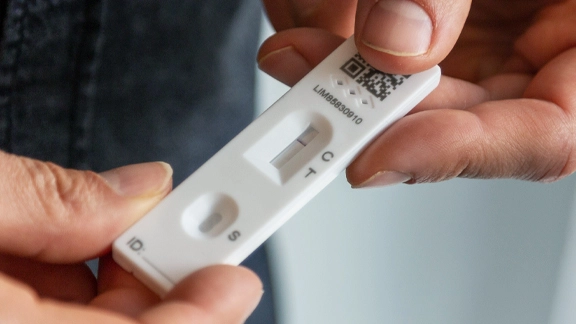Diagnosing COVID-19
There are two kinds of tests available to diagnose COVID-19: tests for current infection (viral tests) and tests for past infection (antibody tests). Learn more about these types of tests, when you should get tested for COVID-19 and what to do after your test results.
Need Help Finding Testing for COVID-19?
Viral Tests
Viral tests look for a current COVID-19 infection. They use respiratory samples, such as a swab from inside your nose or saliva from your mouth, to determine if you are currently infected with SARS-CoV-2, the virus that causes COVID-19. Depending on the testing site, results may be available within a few minutes, a few hours or may take several days if the sample is sent to a laboratory for analysis.
- NAATs, such as PCR tests are most often performed in a laboratory. These tests may continue to show a positive result for some time, so they should not be used if you have tested positive in the last 90 days.
- Antigen tests or at-home tests are rapid tests and produce results quickly. Antigen tests are less likely to detect the virus than NAAT tests, especially when people do not have symptoms. To be confident that the test is negative, it is recommended that individuals who have symptoms repeat the test 2 times and individuals with no symptoms repeat the test 3 times (48 hours apart).
If you think you are exhibiting symptoms of COVID-19, get tested right away. Visit the CDC’s webpage for choosing a COVID-19 test or read below.
Results from your viral test will indicate that you either:
Antibody Tests to Detect Past Infection
Antibody tests are performed by drawing blood and conducting a laboratory test to check for antibodies that would only be present if you had a past infection of SARS-CoV-2, the virus that causes COVID-19. An antibody test should not be used to determine current infection as it can take your body one to three weeks after infection to make antibodies. If you think you were previously infected with COVID-19, you should speak with your doctor about your symptoms or exposure to infected individuals.
Antibody testing is not recommended to determine immunity or whether you need to get vaccinated.
Results from your antibody test will be positive if you were previously infected with COVID-19 and negative if you have not been previously infected. Regardless of the status of your test, you should take steps, including getting vaccinated, to protect against COVID-19.
Reviewed and approved by the American Lung Association Scientific and Medical Editorial Review Panel.
Page last updated: March 13, 2025





